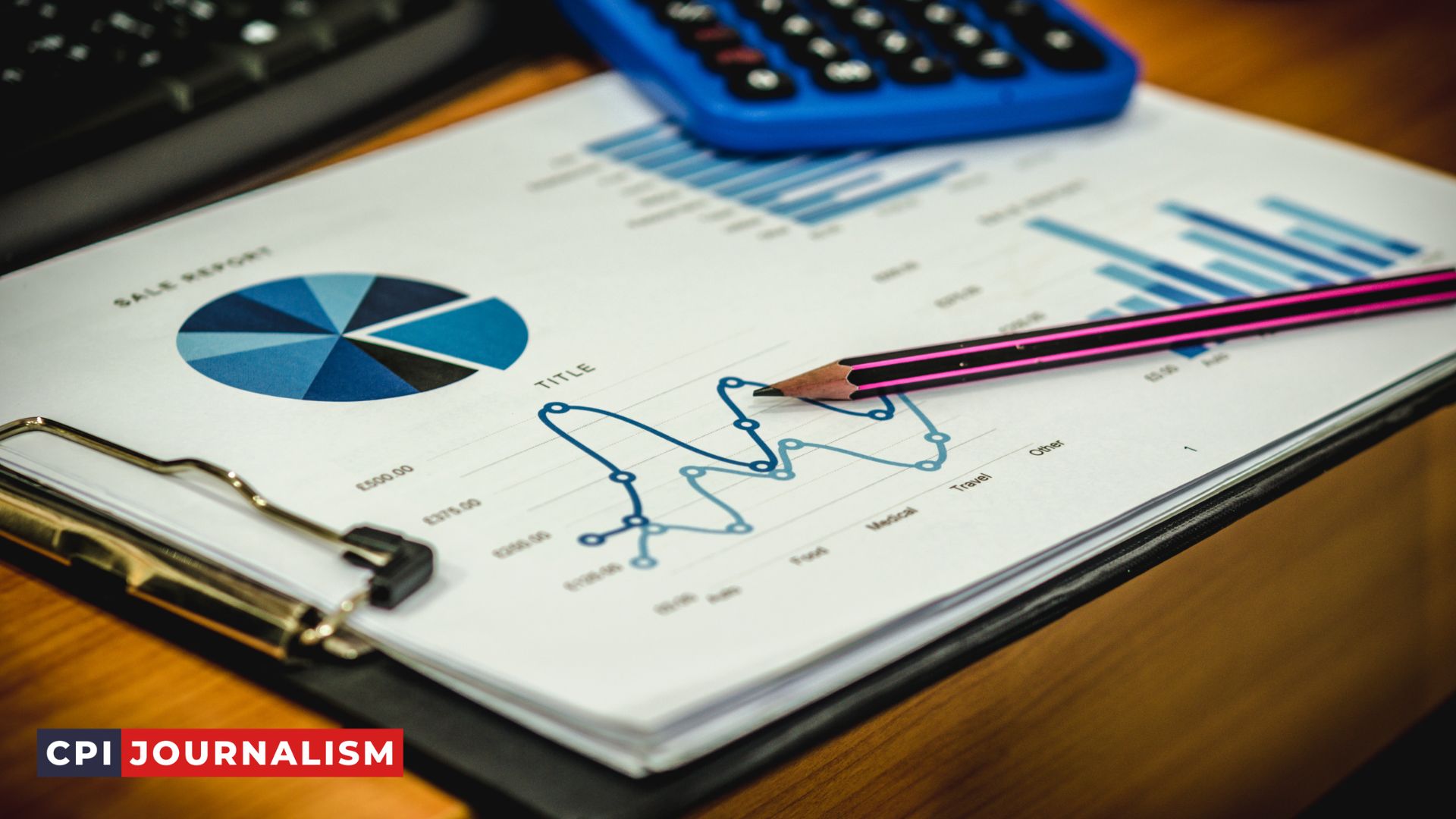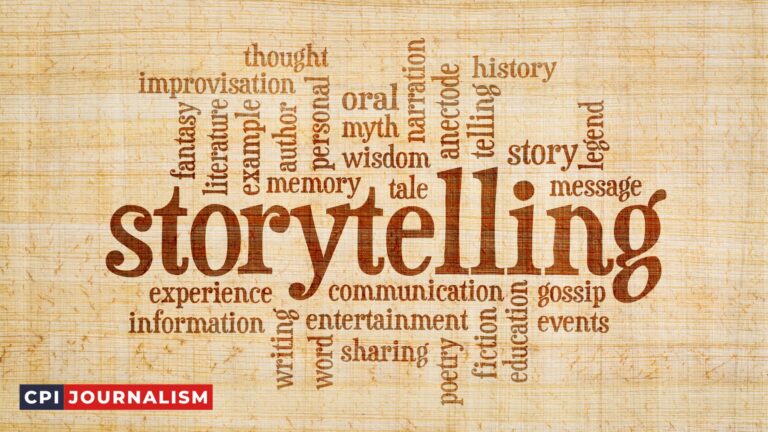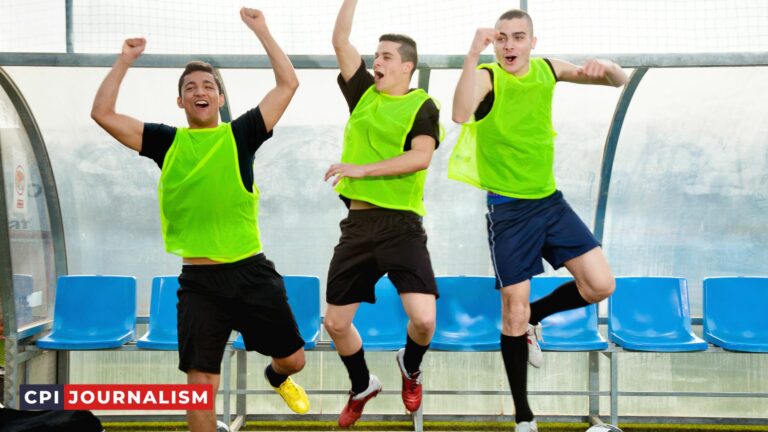How Can Sports Journalists Use Data And Statistics To Enhance Their Stories?
As an experienced journalist, I have seen the power of data and statistics to enhance stories and give them a new level of impact and understanding.
Data can enable sports journalists to tell stories in a more comprehensive way, allowing them to explore the trends and patterns in a game or season more effectively.
In this article, I will look at how sports journalists can use data and statistics to create compelling stories, and how they can use this data to craft stories that provide unique insights.
A. Overview of How Data and Statistics Can Enhance Sports Journalism
Data and statistics can be incredibly valuable tools for sports journalists, allowing them to take their stories to the next level and provide readers with an even deeper and richer understanding of the game.
By leveraging data and statistics to gain insights and draw meaningful conclusions, sports journalists can create stories that are more engaging, more informative, and more impactful.
Data and statistics can be used to provide a more comprehensive analysis of the game, offering a fuller picture of the action on the field.
This can include things like advanced metrics that measure the performance of individual players or teams, as well as more detailed analysis of the game’s dynamics and strategies.
By tapping into the power of data and statistics, sports journalists can bring readers an in-depth analysis of the game that goes beyond the basic facts and figures.
Data and statistics can also be used to identify and highlight trends or patterns in the game. For example, if a team is performing better than expected, a journalist can use data and statistics to identify any underlying trends or factors that might explain the improved performance.
This type of analysis can help sports journalists tell a more nuanced story about the game and provide readers with a better understanding of the bigger picture.
Finally, data and statistics can be used to create compelling visuals and graphics that can help bring stories to life.
Graphs, charts, and other visual tools can be used to illustrate key points and make stories more engaging. By leveraging the power of data and statistics, sports journalists can create stories that are more visually appealing, more informative, and more memorable.
In short, data and statistics can be incredibly powerful tools for sports journalists, allowing them to tell more compelling stories, provide more in-depth analysis, and create more engaging visuals.
By leveraging data and statistics, sports journalists can create stories that are more informative and more impactful.
II. Benefits of Using Data and Statistics in Sports Journalism
The use of data and statistics in sports journalism has a range of benefits. It can help journalists to bring a deeper level of analysis and insight to their stories, enabling them to paint a more accurate picture of a particular sporting event or athlete’s performance.
Data and statistics can help to provide a more comprehensive understanding of a story, as well as supporting the journalist’s claims and conclusions. For example, data can be used to highlight the winning margins of a particular team, or the total number of shots taken by a specific player in a particular match.
This objective evidence can be used to support the journalist’s arguments, providing a more persuasive and authoritative narrative.
Data and statistics can also be used to uncover trends and patterns which may not be immediately obvious. For example, a journalist may be able to identify a pattern of losses in a particular player’s performance, or a trend of improved performance in a particular team over the course of a season.
This kind of analysis can help to provide a more comprehensive understanding of a story, offering a deeper level of insight than simple observations.
Furthermore, data and statistics can help to provide context to a story. For example, a journalist may be able to compare a particular performance against the league average, or benchmark a team’s performance against their rivals.
This kind of analysis can help to provide a more meaningful understanding of a story, enabling the journalist to paint a more accurate and compelling picture.
In addition, data and statistics can help to make stories more engaging for the reader. For example, a journalist may be able to present data in a visually appealing way, such as with charts and graphs, making the story more interesting and easier to understand. This can help to draw the reader in and keep them engaged with the story.
Overall, the use of data and statistics in sports journalism has a range of benefits. It can help to provide a more comprehensive understanding of a story, supporting the journalist’s arguments and conclusions with objective evidence.
It can uncover trends and patterns which may not be immediately obvious, and can provide the necessary context to a story. In addition, it can help to make stories more engaging for the reader, drawing them in and keeping them interested.
A. Improved Accuracy
Data and statistics can be an invaluable tool for sports journalists, allowing them to improve the accuracy and depth of their stories.
As a sports journalist, one of the most important things you can do is to make sure you are accurate in your reporting. Data and statistics provide an important way to back up your claims with hard evidence.
For example, if you’re writing an article about a particular athlete’s performance, you can use data and statistics to provide an accurate assessment of their performance.
You can look at their stats over the course of the season, or even compare them to other athletes in the same sport. This will allow you to present an accurate picture of their performance, rather than relying on subjective opinion.
You can also use data and statistics to provide context to stories. For example, if you’re writing about a team’s performance, you can use data and statistics to provide an overview of the team’s performance relative to other teams in the league.
This can help your readers understand the relative strength of the team and how it has changed over time.
Data and statistics can also help to uncover stories that wouldn’t have been noticed otherwise. For example, if you’re writing about a particular athlete, you can use data and statistics to uncover underlying trends in their performance that may be indicative of an important story.
By digging deeper into the data, you may be able to uncover stories that would otherwise have gone unnoticed.
Ultimately, data and statistics provide an invaluable tool for sports journalists to improve the accuracy and depth of their stories. By leveraging data and statistics, you can ensure that your stories are accurate and provide a deeper level of understanding to your readers.
B. Increased Credibility
Using data and statistics can help to increase the credibility of a story for sports journalists. By providing evidence to back up the assertions made in a story, readers can be sure that the story is based on facts rather than opinion. This can help to build trust and credibility with readers, which is essential for any journalist.
Using data and statistics in a story can also help to make the story more interesting. Rather than simply providing an opinion on a team or player, journalists can use data to analyze performance and compare it with other teams or players.
This can provide a much more in-depth look at the story, which can help to draw in readers.
Finally, using data and statistics in a story can help to give the story more weight. This can help to ensure that the story has an impact and is remembered.
For example, a story that uses data to compare the performances of two teams over the course of a season will have more impact than simply writing a story based on opinions.
In conclusion, using data and statistics in a story can help to increase the credibility of the story, make it more interesting, and give it more weight. This can help sports journalists to create stories that are more compelling and memorable, which is essential for any journalist.
C. Enhanced Storytelling
As sports journalists, using data and statistics to enhance our stories is an invaluable tool. It allows us to provide our readers with more accurate and in-depth insights into the stories we are covering.
Below are some tips and strategies to help you incorporate data and statistics into your stories for enhanced storytelling.
First, it’s important to understand the data and statistics that you’re working with. Take the time to understand the sources of the data, the methods used to collect or analyze it, and the context from which it comes. This will ensure that you’re using the data and statistics in an accurate and meaningful way.
Once you’ve done your research, you can use the data to help you tell a more compelling story. For example, you can use the data to provide a historical perspective, to illustrate underlying trends, or to explain the significance of certain events or outcomes. You can even use the data to make predictions about the future.
Finally, use visuals to help illustrate your story. Graphs, charts, and infographics are a great way to make the data more accessible and understandable to your readers.
The visuals can also help to emphasize the important points and draw attention to the main themes you’re exploring.
By taking the time to understand the data and statistics you’re working with and then using it to enhance your stories, you can create compelling and informative stories that will engage and captivate your readers.
D. Improved Understanding of the Game
Sports journalists must recognize that data and statistics can help to improve their understanding of the game. Statistics can provide insight into tactical decisions, individual contributions, and the overall effectiveness of a team.
By understanding the data and statistics, journalists can report on the game in a more informed and comprehensive manner.
Advanced analytics can be used to identify trends and patterns in performance. This can help to explain why certain events occur and how teams and players have changed over time. Journalists can use this information to create stories that are more in-depth and meaningful.
Statistics can also be used to provide a more objective view of the game. This can help journalists to avoid bias and to provide a more accurate and balanced assessment of the game.
Journalists can use data to evaluate individual players, teams, and coaches in a more objective manner, allowing them to present a more detailed and impartial view of the game.
Finally, data and statistics can be used to create compelling visualizations. Journalists can use visualizations to illustrate trends, patterns, and results in a visually appealing manner. This can be used to draw attention to interesting stories and to make complex ideas easier to understand.
By embracing data and analytics, sports journalists can improve their understanding of the game and create more powerful stories.
III. How to Use Data and Statistics in Sports Journalism
Using data and statistics in sports journalism can be a powerful tool for enhancing stories and making them more engaging and informative for readers. As an experienced journalist,

Here are some tips for leveraging data and statistics in sports journalism:
1. Focus On the Story: When using data and statistics in sports reporting, it is important to ensure that the story is the focus. Data should be used to support the story, rather than the story being used to support the data.
2. Use Visuals: Visuals are a great way to present data and statistics in an engaging way. Incorporating visuals such as graphs, charts and diagrams can help to make the data more accessible and easier to understand.
3. Check Your Sources: It is important to ensure that the data and statistics being used are accurate and up-to-date. Ensure that the sources of the data are reliable and trustworthy.
4. Use Comparisons: Comparing data and statistics can be a great way to add context and perspective to a story. For example, comparing players’ stats over time or comparing teams’ performance in different leagues.
5. Highlight Trends: Looking for trends in data and statistics is a great way to uncover stories that might otherwise go unnoticed. This can help to add depth and interest to stories and make them more compelling for readers.
By using data and statistics in sports journalism, journalists can create stories that are more engaging and informative for readers. It is important to ensure that data and statistics are used in a way that adds to the story and does not detract from it.
By following the tips outlined above, journalists can ensure that they are using data and statistics in an effective and meaningful way.
A. Identifying Relevant Data and Statistics
As a sports journalist, it is important to identify relevant data and statistics that can be used to enhance your stories. The key to success when using data and statistics to tell a story is to be selective and precise.
It is essential to understand the context in which the data was collected, the accuracy of the data, and the relevance of the data to the story that you are telling.
When identifying relevant data and statistics, it is important to consider the source of the data. Is the data from a reliable and reputable source? Are the data and statistics supported by other data sources? If the data is from an unreliable source, this could lead to misleading conclusions.
In order to ensure accuracy and relevance, it is also important to consider the time period that the data covers. It is important to remember to compare the same time period when looking at different data sources.
For example, if you are looking at a graph of a team’s performance over the past five years, it is important to make sure that the data covers the same five-year period.
Finally, it is important to consider the relevance of the data to the story that you are telling. For example, if you are writing a story about a team’s performance over the past five years, it would not be relevant to include data about the team’s performance over the past ten years.
By carefully selecting the most relevant data and statistics and understanding the context in which the data was collected, sports journalists can use data and statistics to enhance their stories and provide their readers with a more comprehensive understanding of the topic.
B. Analyzing Data and Statistics
Analyzing data and statistics is an important part of sports journalism. It can give a story depth and insight that can’t be found in just the narrative alone. When used correctly, data and statistics can provide context and evidence to support the story’s argument.
When analyzing data and statistics, it is important to understand the context of the data and what it is trying to tell us. It is also important to understand the sources of the data and the methodology used to collect it.
Knowing these things will help journalists better interpret the data and make sure they are using it accurately and responsibly.
When analyzing data and statistics, it is also important to look for patterns and trends. Journalists can use these patterns and trends to help support the story’s argument.
For example, if a journalist is writing a story about a particular athlete’s performance, they can look at the athlete’s stats over the course of their career to see if there are any patterns or trends in their performance.
When looking for patterns and trends, it is important to remember that correlation does not always equal causation. Just because two things are related does not necessarily mean that one caused the other.
It is important to look for other factors that could be influencing the data before drawing conclusions about causation.
Finally, it is important to remember that data and statistics can be open to interpretation. It is important to look at the data from multiple angles and to consider different interpretations. This can help journalists better understand the data and can lead to more accurate and insightful stories.
C. Presenting Data and Statistics
When using data and statistics to enhance sports stories, journalists should pay particular attention to how the data and statistics are presented.
The presentation of data and statistics should be clear and easy to understand, as readers may not be familiar with the technical terms or have a background in the topic.
First, journalists should consider the audience for the story. Knowing who the audience is will help determine the style and format of the data presentation.
For example, if the audience is a broad demographic that may not have a technical understanding of the data, then presenting the data in a simple chart or graph may be more effective than a complex table of numbers.
Second, journalists should consider the type of data and statistics they are presenting. Different types of data and statistics require different methods of presentation.
For example, categorical data (such as win/loss records) can be presented in a pie chart while numerical data (such as attendance records) can be presented in a line graph.
Third, journalists should consider the context of the data and statistics they are presenting. Contextualizing the data and statistics will help readers understand the importance of the data and why it matters.
This can be achieved through the use of explanatory text or by providing a comparison to another set of data or statistics.
Finally, journalists should use visuals to help readers understand the data and statistics. Visuals can be used to show trends, patterns, and relationships in the data. Visuals can also help to break up the text and make it easier for readers to understand.
By paying attention to the presentation of data and statistics, journalists can help ensure that their stories are engaging, informative, and easy to understand. This will ultimately help readers better appreciate the importance of the data and statistics in the story.
D. Utilizing Visualizations
As a sports journalist, it is important to make sure that you utilize visualizations to help enhance your stories. Visualizations can be used to bring greater clarity to the data and statistics you are presenting in your story.
For instance, you can use a graph or chart to show a trend in a certain statistic over time or to illustrate a particular comparison.
Visualizations can also be used to make data easier to absorb and understand. You can use a map to show the geographical distribution of certain data, or a pie chart to compare different percentages.
Visualizations can also be used to show relationships between different data points, such as a scatter plot showing the correlation between two variables.
When using visualizations, it is important to make sure that you clearly explain what the visualization is showing. Make sure that you provide enough context for the reader to understand the data and how it relates to your story.
Also, be sure to use visuals that are well-designed and easy to understand. Poorly designed visualizations can be confusing and detract from the story.
By taking the time to utilize visualizations, you can significantly enhance the stories that you write about sports. Visuals can make data and statistics more understandable and help bring your stories to life.
IV. Examples of Data and Statistics Used in Sports Journalism
One of the primary ways that sports journalists can use data and statistics to enhance their stories is by providing a deeper level of analysis.
For example, journalists can compare the performance of players or teams over a specific period of time or across different sports. They can also use data and statistics to identify patterns that may have otherwise gone unnoticed.
In addition, data and statistics can be used to highlight key trends in a sport or across multiple sports. For example, journalists can compare the salaries of athletes across different sports and draw conclusions about the disparities in pay.
They can also use data to analyze the performance of a specific athlete or team over a certain period of time and make predictions about their future performance.
Data and statistics can also be used to provide insight into the overall health of a sport. For example, journalists can use data to examine the number of injuries sustained by athletes, the impact of rule changes on the game, or the overall attendance of sporting events.
This type of analysis can provide an interesting perspective on the current state of a sport and can help journalists create compelling stories.
Finally, data and statistics can be used to support or refute commonly-held beliefs about a particular sport or athlete. For instance, journalists can use data to compare the performance of two athletes in the same sport and draw conclusions about which one is more successful.
They can also use data to compare the playing styles of different teams in the same sport, or to compare the performances of teams across different sports.
In summary, data and statistics can be used by sports journalists to provide a deeper level of analysis, highlight key trends, and provide insight into the overall health of a sport.
Furthermore, data and statistics can help support or refute commonly-held beliefs and help journalists create more compelling stories.
A. Player Performance Statistics
As a sports journalist, one of the most important sources of data and statistics you should be aware of is player performance statistics.
Player performance statistics can provide a great deal of insight into how well the team is performing and how individual players are contributing.
This can be especially useful for analyzing team performance over the course of a season, as well as for making comparisons between players on different teams.
For example, player performance statistics can tell you how many goals a player has scored, how many assists they have made, how many blocks they have made, and how many shots they have taken. These types of stats can be used to get an overall sense of how effective a player is and how they are benefiting their team.
They can also be used to identify which players are making the most contributions on offense and defense, as well as which players are most efficient when it comes to taking shots.
Player performance statistics can also be used to make comparisons between players on different teams. For example, you can compare the number of goals scored by a player on one team to the number of goals scored by a player on another team.
You can also compare the number of assists made by one player to the number of assists made by another player.
These types of comparisons can be very revealing and can help to paint a better picture of how players are performing on different teams.
In addition to this, player performance statistics can also be used to assess the performance of individual players over the course of a season.
For example, you can track how many assists a particular player has made over the course of a season, and how many goals they have scored.
This can help to identify which players are improving over the course of the season and which players are struggling.
Overall, player performance statistics can be a valuable source of data and statistics for any sports journalist. They can provide insight into how well the team is performing, as well as how individual players are contributing.
They can also be used to make comparisons between players on different teams, as well as to assess the performance of individual players over the course of a season.
B. Team Performance Statistics
Team performance statistics are essential information needed to create a compelling sports story. As a sports journalist, you need to be able to access and analyze team performance data to better understand the game and to provide your audience with an in-depth look at the teams’ performance.
There is a wide range of data sources available for team performance, ranging from traditional statistics such as points scored, to more advanced metrics such as expected goals and shot locations.
By accessing and analyzing these data sources, journalists can gain a better understanding of the game and provide more detailed analysis.
For example, analyzing the expected goals metric can help you understand why a team performed better or worse than expected. You can look at the number of shots taken, the quality of chances created and the location of shots taken to determine why a team might have performed better or worse than expected.
In addition, analyzing team performance data can also help you draw conclusions about a team’s strategy. By looking at the number of passes made, the types of passes played, and the locations of those passes, you can gain insight into the team’s tactical approach.
By using team performance data, you can provide your audience with an in-depth look at the game and help them understand why a team performed the way it did.
With this information, your readers can gain a deeper understanding of the sport, and you can create more compelling stories that captivate your audience.
C. Historical Data
Historical data is one of the most useful tools for sports journalists. This data can be used to compare current performance to past performance, allowing for a more nuanced look at a team or individual’s performance.
Historical data can also be used to contextualize current events and put them in perspective.
For example, if a team has been playing poorly for the past few weeks, historical data can be used to determine if this is an outlier or part of a larger trend. It can also be used to look at how the team has fared against a certain opponent in the past.
Historical data can also be used to determine which athletes have consistently been the most successful over time, or which teams have been the most consistent performers.
Historical data can also be used to tell stories that span long periods of time. By looking at long-term trends, journalists can tell the stories of rising stars, the history of a team or a particular rivalry, or the evolution of a sport over the years.
Overall, historical data is an invaluable tool for sports journalists. By leveraging this data, journalists can tell richer stories and provide deeper insight into the athletes and teams they are covering.
D. Advanced Analytics
For experienced sports journalists that are looking to take their stories to the next level, advanced analytics can be a powerful tool.
Advanced analytics can provide much more detailed insights into a game or a player’s performance than traditional stats and can be used to tell a more nuanced story.
One type of advanced analytics that is becoming increasingly popular is predictive analytics. This type of analytics takes data from past games to predict what will happen in the future. This can be used to forecast a team’s performance or to give predictions on the result of a game.

Another type of advanced analytics that can be used is machine learning. This type of analytics uses algorithms to analyze data and identify patterns that can be used to make predictions.
This can be particularly useful when it comes to predicting a player’s performance in a game or analyzing team performance.
Finally, advanced analytics can be used to gain insights into a player’s individual performance. This can be particularly useful in analyzing athletes who have a large body of data available.
By using advanced analytics, journalists can gain a much more detailed understanding of an athlete’s performance and how it has changed over time.
Overall, advanced analytics can be a powerful tool for sports journalists who want to take their stories to the next level. By taking advantage of the insights that advanced analytics can provide, journalists can tell more nuanced and detailed stories that will engage their readers.
V. Challenges Of Using Data And Statistics In Sports Journalism
Sports journalists face a unique challenge when attempting to use data and statistics to enhance their stories. As many sports involve human elements, the data and statistics available can be highly subjective and difficult to interpret.
Additionally, many of the data sources available to sports journalists may not always be reliable, as they often rely on third-party sources or are simply outdated.
As a result, sports journalists must be highly adept at interpreting data and statistics in order to accurately report on their stories.
They must have an understanding of the sport and its rules in order to effectively interpret the data and draw reliable conclusions.
They must also be able to recognize and identify patterns in data and statistics in order to draw meaningful insights from the information.
Finally, sports journalists must be careful to avoid making assumptions from their data and statistics. It’s easy to jump to conclusions, but it’s important to ensure that the data and statistics are accurate and relevant to the story.
It’s also important to remember that data and statistics can often be manipulated to support a particular narrative, and as such, it’s important to recognize any potential bias or misleading information.
Ultimately, sports journalists must be judicious and analytical when using data and statistics to support their stories.
They must have a thorough understanding of the sport and its rules, an ability to interpret the data and draw meaningful insights, and the knowledge to recognize potential bias or misleading information. Only then can they use data and statistics to effectively enhance their stories.
A. Accessibility of Data and Statistics
As a sports journalist, it is important to be aware of the various data and statistics available to you in order to enhance your stories.
The accessibility of data and statistics for sports reporting has greatly evolved in recent years, with a wide range of sources available to journalists.
One of the most accessible sources of data and statistics for sports reporting is the internet. A quick search online can reveal a wealth of information about a particular sport, team, or player.
Social media platforms such as Twitter and Facebook are also great sources of data and statistics, as they can provide up-to-date information on a team’s performance or a player’s stats.
Additionally, many sports organizations now provide comprehensive data and statistics on their websites, which are frequently updated.
In addition to the internet, sports journalists can also obtain data and statistics from other sources such as newspapers, magazines, and television.
Newspapers and magazines often include comprehensive statistics and data in their sports sections, while television networks such as ESPN and Fox Sports provide detailed data and statistics for viewers.
Sports journalists should also be aware of the various data and statistics services offered by companies such as STATS and Bloomberg.
These companies provide comprehensive data and statistics on sports teams and players, which can be invaluable for sports reporting.
Finally, sports journalists should not forget about the importance of in-person interviews. Talking to players and coaches directly can provide invaluable insight into a team’s performance and can reveal important statistics and data that may not be readily available online.
By taking advantage of the various data and statistics sources available to sports journalists, stories can be enhanced and readers can gain a better understanding of the team or players being reported on.
B. Understanding Data And Statistics
When it comes to using data and statistics to enhance your sports stories, it’s important to have a basic understanding of the data and statistics that are available.
Data is everywhere in sports and can range from player stats to team stats to game stats. It’s important to understand the different types of data that are available, and what information each type of data can provide you with.
Statistics are a way of summarizing data to provide insight into the underlying trends and patterns that exist in the data.
When it comes to understanding data and statistics, it’s important to have a basic understanding of the fundamentals.
This includes understanding the types of data available, understanding how to interpret the data, and understanding how to use the data to support the story.
You should also be familiar with some of the common statistical methods used to analyze data such as correlation, regression, and hypothesis testing.
Additionally, it’s important to understand the different types of data visualizations available, such as charts, graphs, and tables, and how to use them to effectively communicate data in your stories.
Understanding data and statistics is an essential skill for any sports journalist. With a basic understanding of the fundamentals, you can use data and statistics to enhance your stories and provide your readers with valuable insights into the world of sports.
C. Presenting Data and Statistics
Sports journalists have a wealth of data and statistics at their disposal to enhance the stories they tell. To effectively utilize this information, it is important to understand the fundamentals of data visualization and presentation.
Data should be presented in a manner that is both informative and visually appealing. When presenting data, it is important to use the most appropriate graph or chart type for the data being presented.
For instance, if you are presenting the results of a poll, a pie chart or bar graph would be the most effective way to present the data.
Statistics should also be presented in a way that is both informative and engaging. To do this, journalists should use appropriate and interesting visuals to help break down the data and explain it in a more straightforward way.
For example, journalists can use infographics to illustrate the most important points or trends in the data. Journalists can also use animation or interactive elements to illustrate the data in an engaging and interactive way.
Finally, journalists should also be aware of the potential for bias when presenting data and statistics. To ensure that the information is presented in an unbiased and accurate way, journalists should take the time to research the source of the data and ensure that it is valid and reliable.
Additionally, journalists should be aware of any potential conflicts of interest that could influence the way the data is presented and take steps to ensure that the data is presented in an unbiased manner.
D. Keeping Up with the Latest Trends
As a sports journalist, it is important to stay up to date on the latest trends in data and statistics. This means keeping abreast of the latest developments in sports analytics and understanding the types of data and statistics that can be used to enhance your stories.
To stay on top of the latest trends, it’s helpful to become a member of a professional organization or network that focuses on data and analytics in sports. This will give you access to the latest research and insights in the field and help you stay ahead of the curve.
You should also take advantage of the many online resources available to help you stay informed. For example, there are numerous websites and blogs dedicated to sports analytics and data-driven storytelling.
By reading these sites, you can gain an understanding of the latest trends and techniques in data and statistics in sports.
Finally, it’s important to attend industry conferences and workshops that focus on data and analytics in sports. These events are often an excellent source of information, providing you with the latest insights and techniques for making the most of data and statistics in your stories.
By staying up to date on the latest trends in data and statistics, you can ensure that your stories are as informed and accurate as possible. This will help you produce compelling stories that can bring your readers closer to the action.
Vi. Conclusion
As a journalist, it is essential to understand the power of data and statistics in telling a story. With the right information, sports journalists can create powerful stories that will captivate their readers.
By using data and statistics to draw conclusions, analyze trends, and identify angles, journalists can make their stories more interesting and engaging.
In addition, data and statistics can also help journalists identify potential informational gaps in their stories. This can be useful for journalists who want to go beyond the basic facts and figures to find unique angles to explore.
Finally, data and statistics can help journalists be more credible and accurate. By understanding the data and statistics behind their stories, journalists can provide more accurate information and substantiate their claims.
With the right tools and resources, sports journalists can use data and statistics to make their stories more informative, engaging, and accurate. With the help of data and statistics, sports journalists can continue to create stories that capture the attention of their readers and make a lasting impact.
A. Summary of Benefits of Using Data and Statistics in Sports Journalism
Data and statistics are powerful tools for sports journalists, providing them with an array of benefits that can help to enhance their stories.
The ability to access and analyze large amounts of data quickly and accurately can provide sports journalists with valuable insights that can be used to inform and support their reporting. Data and statistics can also be used to create compelling visuals, such as graphs and charts, which can help to make stories more engaging and easier to understand.
Furthermore, data and statistics can help to provide a deeper level of analysis, giving sports journalists the ability to probe into the underlying causes and trends which can help to uncover hidden stories.
Finally, by using data and statistics, sports journalists can ensure that their stories are well-grounded in evidence and facts, which can help to ensure accuracy and credibility. Ultimately, the use of data and statistics in sports journalism can help to make stories more impactful and informative.
B. Summary of Challenges of Using Data and Statistics in Sports Journalism
Sports journalists have a unique challenge when it comes to using data and statistics in their work. On one hand, data and statistics can add a great deal of depth, accuracy, and context to stories.
On the other hand, the sheer amount of data available, the complexity of interpreting the data, and the lack of standardization across the sports world present a range of challenges for sports journalists.
The sheer amount of data available can be overwhelming for sports journalists, who may not have the time or technical expertise to sift through all of the available data.
This is compounded by the complexity of interpreting the data, which can require specialized software, statistical modeling, and in-depth analysis.
Furthermore, the lack of standardization across the sports world makes it difficult to compare data across different sports and leagues, which can limit the insights that can be gained from the data.
Finally, there is the challenge of making sure that data is accurately presented and properly contextualized in stories.
Journalists must be aware of potential biases in the data, be able to explain the data in clear and concise terms, and avoid sensationalizing the data or using it to make sweeping generalizations.
Overall, using data and statistics in sports journalism is a challenging but rewarding endeavor. With the right resources and knowledge, sports journalists can use data to enhance their stories and provide readers with valuable insights.
C. Final Thoughts on How Sports Journalists Can Use Data and Statistics to Enhance Their Stories
In conclusion, data and statistics can be powerful allies for sports journalists. With the right knowledge and skill set, journalists can use data and statistics to tell more engaging and meaningful stories.
It is important to remember that data and statistics should only be used to supplement stories, not replace them. As a journalist, it is essential to remember that data and statistics are only as powerful as you make them.
With the right approach, sports journalists can use data and statistics to create compelling stories that captivate and engage readers.
To get the most out of data and statistics, sports journalists should consider the following best practices:
• Utilize the right data and statistics to tell the story. Choose data and statistics that are relevant to the story and that support the point you are making.
• Make the data and statistics relatable. Use visuals and analogies to help readers understand the data and statistics.
• Make sure to provide context. Provide readers with the necessary context to understand the data and statistics.
• Use data and statistics to ask questions. Pose questions to readers that will prompt them to think more deeply about the story.
• Remember to tell a story. Even if you’re using data and statistics to supplement your story, remember to focus on telling a compelling story.
Finally, it is important to remember that data and statistics can enhance sports stories, but they cannot replace them. A good sports journalist knows how to blend data and stories to create a captivating and engaging narrative.
By following these best practices, sports journalists can use data and statistics to enhance their stories and create compelling stories that engage readers.







